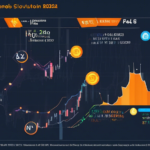The landscape of health insurance in the United States is continually evolving, with significant developments impacting Medicare and broader healthcare reforms. Recent proposals and regulations reflect a focused effort to extend telehealth services that became prominent during the pandemic and to augment insurance coverage, particularly concerning mental health and the Affordable Care Act (ACA).
Medicare Telehealth Expansion
In response to the demand and success of telehealth services during the COVID-19 pandemic, the Centers for Medicare & Medicaid Services (CMS) are seeking to sustain telehealth measures. One notable initiative is the proposal to maintain Medicare telehealth services flexibility, vital for patients who benefited greatly from remote consultations. Prominent among the proposed changes is the continuity of remote supervision via audio-video technology, allowing healthcare practitioners to oversee patient care without being physically present. This step is essential for modernizing healthcare delivery and ensuring accessibility for rural or homebound patients.
Moreover, CMS is addressing logistical considerations by permitting telehealth professionals to bill services from their current location rather than specifically their home address. This change is a response to safety and privacy concerns associated with disclosing personal addresses, thus fostering a more secure telehealth environment. Additional regulatory adjustments include broadening the definition of the “Interactive Telecommunications System” to integrate audio-only communications, thereby ensuring that patients lacking video technology are not deprived of healthcare services.
Legislative and Regulatory Developments
The legislative landscape is also active, with several Congress members pushing bills like the Telehealth Modernization Act of 2024, aimed at permanently expanding telehealth capabilities. Such laws intend to incorporate a wider array of healthcare professionals, such as occupational and physical therapists, to engage and be reimbursed for telehealth services. This is part of a concerted effort to institutionalize telehealth as an integral healthcare delivery mode beyond emergency measures.
While telehealth receives substantial attention, other insurance domains are undergoing reform as well. The finalized Short-Term Limited Duration Insurance (STLDI) rule limits such insurance plans to a three-month term, with a maximum four-month extension, effective from September 2024. This move is part of a broader strategy to refine insurance scopes, pushing consumers towards more comprehensive, ACA-compliant plans and protecting them from the pitfalls of insufficient coverage.
Revisions are also underway to strengthen mental health and substance use disorder coverage. New rules demand parity in benefits offered for these conditions compared to physical medical conditions, a policy poised to protect over 150 million individuals. Addressing mental health equity represents a significant stride in the holistic treatment of enrollees in private healthcare plans.
Lastly, the ACA continues to see rising engagement with record sign-ups surpassing 15 million individuals. The administration is focused on expanding ACA enrollments and enhancing consumer protections, actively working to retract regulations from previous administrations that could weaken consumer security, such as those related to short-term and association health plans. This enduring commitment underscores the ACA’s role as a foundation for accessible, comprehensive health coverage in the U.S.














